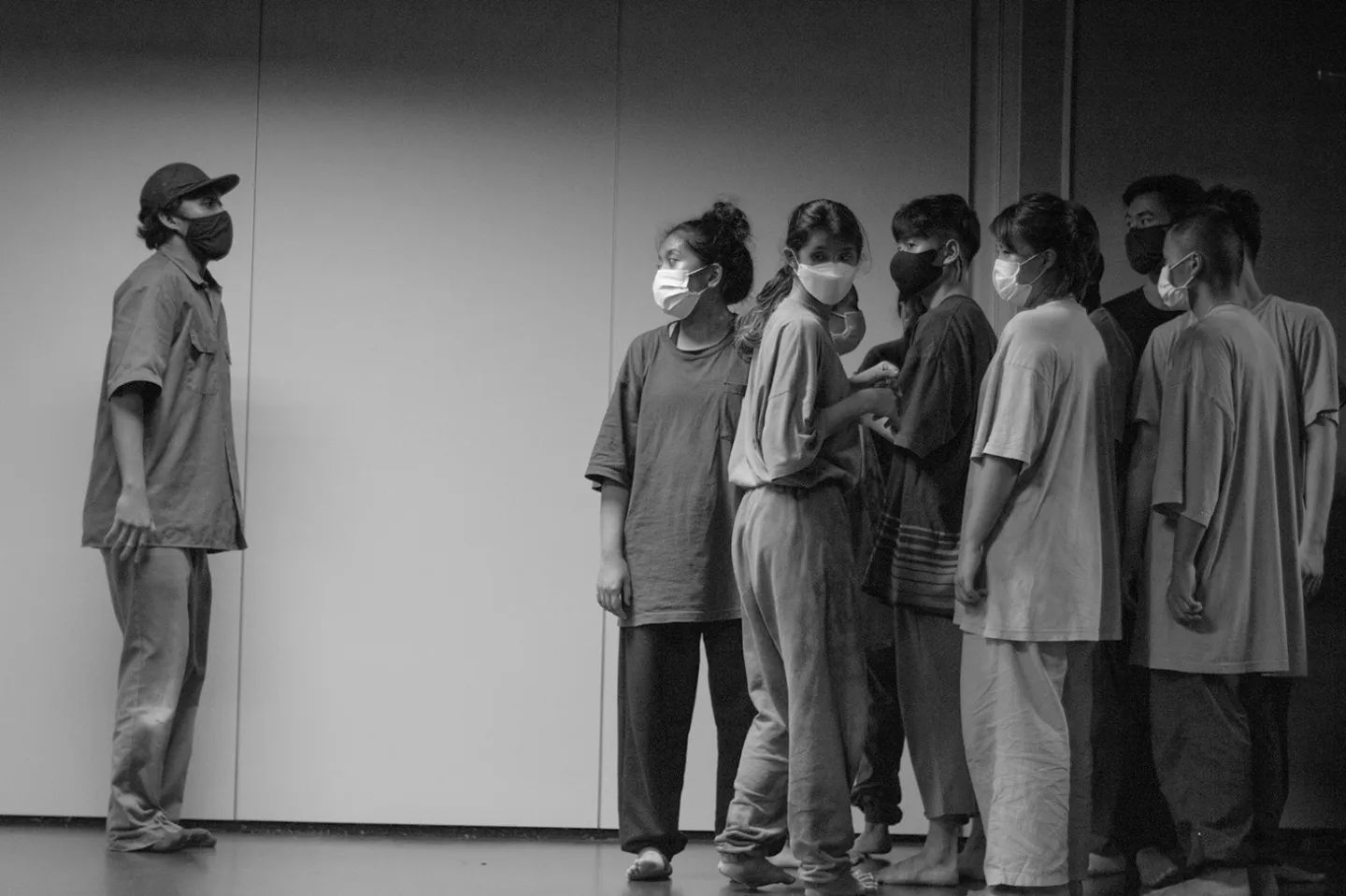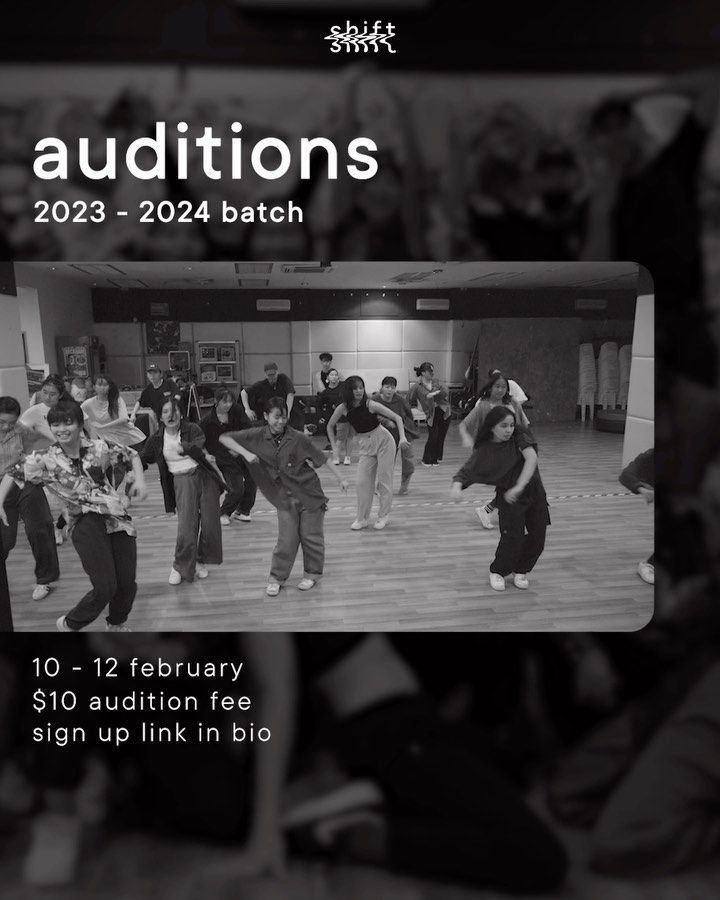After over a decade of dance, Lion City Luqman shares the inspiration behind his SHIFT dance program and his goals for the local street dance scene!
In 2021, Luqman piloted a dance program called SHIFT. It’s meant to be a progressive young dance artist development program catered to youths of ages 14 to 25, and over three years. The goal is that young dancers can develop the physical and mental capabilities needed to sustain in Singapore’s arts industry. Each year highlights different necessary aspects of dance to advance participants’ dance techniques and artistic capabilities.

Courtesy of Luqman (@lioncityluqman)
Through workshops, lectures and hands-on experiences in the industry, dancers will learn to adapt to different styles of movement while gaining knowledge in technical areas such as body anatomy and maintaining physical wellness. Participants will receive opportunities to apply what they’ve learned with industry professionals. This way, their experience in SHIFT will bring skills and knowledge beyond dance itself.

Courtesy of SHIFT (@shiftsg_)
So after 16 years in the dance scene, what is the purpose of SHIFT and what does Luqman envisions for it? We managed to speak to him as he shared the inspiration and origins of SHIFT’s ideation!
Dreamfellas: First and foremost, we would love to learn more about SHIFT as a whole. We know that it’s a three-year program, but I think it’d be great to dive deeper to find out what inspired you to initiate it!
Luqman: When I first started dancing, I was a freestyler so I was participating in battles and competitions like choreography competitions. So now I’m entering my 16th year of dancing and I started questioning myself: what is the main problem in the street dance scene?
It’s not about the lack of instructors or the lack of knowledge, but I think it’s the knowledge of surviving and it goes across any industry. The problem with the arts industry is that people often say it’s hard to survive. I feel like people don’t explore the different ways to survive and instead believe that the only way to do so is to become an instructor. If the turnover rate is that short, where you want to be an instructor after 6 months to two years of dancing, with plans to take over as an instructor or become someone’s mentee to eventually take after them, what will happen to the older generation? They’re not going to just give it up just like that, they would want to be around for support and to hold down the fort while the newer dancers grow to surpass us. When that happens, the younger dancers complain about not being given opportunities. But most people have tunnel vision — they view success as becoming a dancer or instructor and nobody looks elsewhere.
I realized that dance can actually create a lot of jobs beyond dancers and instructors, like a designer. The fact that you are a dancer and you are exposed to different aspects and tools to design movement, it’s similar to design and marketing. There are parallel aspects such as the lines, colors and costumes but we just don’t dive enough into them.
How are NAFA, Lasalle, and SOTA similar? They all focus on fine arts, contemporary, or ballet. My question is why don’t Singapore back street dancers as much as they do these genres? We are still a baby, despite how much we’ve grown and achieved. Places like the UK have had Street Theatre since the 1990s, and we are just exploring this now. I believe that people don’t want to look at street dancers as responsible people. The fact that street dance is, in a way, a rebellious kind of movement and exerts a certain kind of energy; but there’s beauty in it because art is everywhere and it is a spectrum, one isn’t better than the other.
For me, when I created SHIFT, I told myself as a freestyler and street dancer first (before going into ballet, contemporary, music and visual arts), that I wanted dancers to be able to incorporate all these mediums into dance. I want to challenge myself and see how creative I can be because that process is fun, as it should be, but most dancers don’t see that. There are many opportunities for collaboration within the arts industry. It would even be possible to incorporate engineering into dance, but why don’t dancers explore that? Even the art of thinking — how you think about choreographies could be sold to companies. These are all ideas and perspectives to prepare students to know what they are worth. Otherwise, the tunnel vision continues and they think their prospects are only to be an instructor or school teacher. I’ve had friends older than me waiting to see if they get the bid to take schools and it’s unsustainable. Each year, schools are getting fewer due to the population. So if we cannot afford to understand how art can be expanded, it will grow more difficult.
My first batch of students were mostly those who attended my courses. When they first came in, I asked if they would consider dancing in theaters, but they’ve never tried it. Freestylists, of course they’re battling but how much will you win? A few hundred dollars and bragging rights? That doesn’t put food on the table.
How do you realistically survive in Singapore? So I’m really trying to create a platform where dancers are equipped to survive as a dancer in Singapore. I’ve been through commercial works and I’ve also rejected many of them even if it paid well because it doesn’t align with my purpose. When I think of my purpose, the word ‘place’ comes to mind. I want people to find a place where they feel safe and they are free to create. I’ve been inspired by many dancers and experiences to create jobs in dance that might not have existed before. It may be unorthodox, or weird and might not even work in the present day. But if you think ahead into the next five or 10 years, it might become relevant and you’ll be one of the pioneers if you stick to it.

Shot taken during the final vetting of Jalan Jalan Cari Makan. Courtesy of SHIFT (@shiftsg_)
DFL: You talked about many different aspects of street dance — wanting to explore and share with your SHIFTers alongside the knowledge you want to instill in them. In the three separate years of SHIFT, do you emphasise or focus on any specific skill sets for them?
Luqman: Yes, there might be some particular skill sets I focus on but ultimately, we are all movers so each year we still keep to working on their craft. It does depend because currently the commitment level is still once a week but over time, it can be a full-fledged, daily program. Each year, we get closer to the dancers so concurrently, we also dive deeper into the content and education. For example, in the first year, the group is exposed to everybody, then in the second year, they learn more about the craft itself and learn more about the artistic views.
As freestylers, I often get questioned why they need to know about theater works, etc. but they forget that movement has a lot of intentions that covers many layers and levels of dance. Eventually, once dancers gain this knowledge and understanding, it will become second nature and they will apply it during improvisations. This way, more doors open for them.
Finally, in the third year, students are seen as artists. Will they be able to own their craft at this point, with a systematic and organised manner of training? I’ve learned from many contemporary pioneers and icons who move so efficiently, and I think street dancers in Singapore can learn a lot from their work ethic. Overall, I feel that it’s not as easy to determine what skill sets will be focused on or introduced each year because it depends on the individuals we take in.

Shot taken during the final vetting of Jalan Jalan Cari Makan. Courtesy of SHIFT (@shiftsg_)
DFL: Wow, it’s been really interesting to hear your perspectives so far! Now, we’d love to learn more about your audition process. You hold one annually and the next one is set to be in February, so is there anything in particular that you look for in auditionees?
Luqman: Honestly, the auditions are a case-by case basis. We have interviews with the auditionees as well. So when we talk to them, we often understand what they’re like.
I’m more open and it doesn’t matter which level of dance they are on, I will present to them the commitment required of them and ask them how they will manage it. Whether I select them or not, and how I do that, I’ll keep it private. Although, I’ve had people tell me that the auditions were hard. But it is that way because I only have a 4-hour session once a week — the learning curve is very steep and they will have to be able to take that stress and pressure.
It’s entirely up to the students if they want to take up the challenge. Of course, with any long term course or program, dancers have space to breathe. But since I only have weekly sessions, dancers will have to learn to pace themselves. We will consciously make tweaks and changes along the way to make it better for the dancers.
So, for the auditions, in terms of criteria, do they have the heart to commit to the first year? Because one year is not too hard, it’s just about how you manage your time and priorities. Three years, however, is a much tougher commitment. That’s why it really depends on how the SHIFTers will prioritise their time and manage their responsibilities. They have to take accountability for their own attendance, discipline and performance.
Yet another representation of what a driven dancer could be. It’s clear that the street dance scene can look forward to more platforms and opportunities to spur progress in Singapore. In our editor’s own words, Luqman is poised to be Singapore’s very own dance activist.
SHIFT will be holding two events this month! Jalan Jalan Cari Makan is a production choreographed and performed by the latest batch of Year 1 SHIFTers, taking place at the Stamford Arts Centre on 14 and 15 January.
If you’re interested in witnessing the outcome of the program, the Year 2 SHIFTers will be putting on a dance showcase, Equilibrium, on 29 January at ART:DIS.


Courtesy of SHIFT (@shiftsg_)
Finally, if you are interested in being a SHIFTer yourself, the next audition will take place from 10 to 12 February. Registration is now open here, but will be closing on 3 February. Do note that there is a $10 audition fee required and training sessions will take place every Saturday from 3 to 7 pm.

Courtesy of SHIFT (@shiftsg_)
So, there you have it. We hope you had as much pleasure learning about SHIFT as we did, and we look forward to the impact it will have on our local street dance scene!
For more dance reads, click here.



